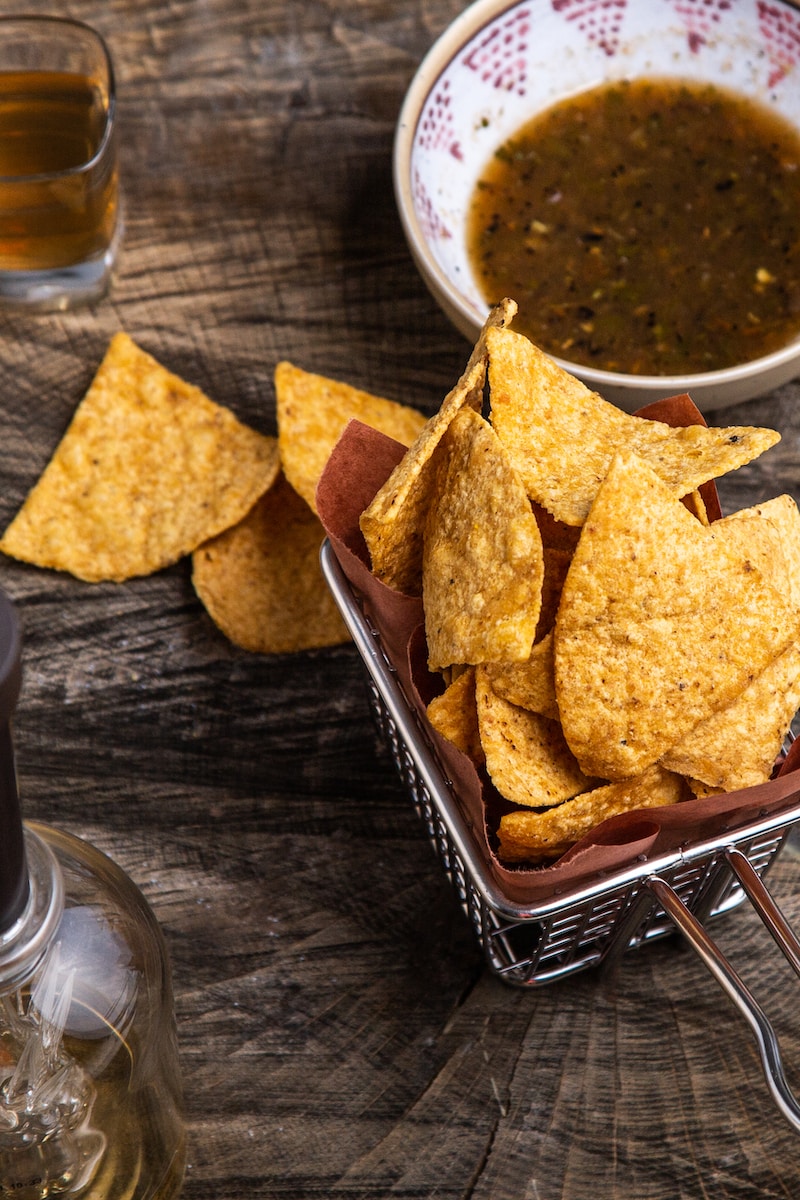Summary. This article takes an in-depth look at which foods pose the greatest health risks to humans, and explains why. From foods high in saturated fats to processed meats, there are several ingredients that can raise the risk of certain diseases and ailments. High sodium consumption, and added sugars and syrups are all common culprits in unhealthy diets, as is white flour. The article also discusses artificial sweeteners, a food additive that may not be as safe as we think. Ultimately, understanding the dangers associated with certain types of food can help us make healthier choices and improve our overall well-being.
Are you concerned about what you’re eating every day and what it will do to your health? Do you know which foods are the most harmful for you and why? In this blog post, you’ll find out the answer to these questions and how to make healthier food choices for a healthier lifestyle. Most foods can be harmful if we eat too much of them or if we’re not making good food choices in general.
The most common foods that are considered to be harmful include, processed meats and dairy products, refined sugars, foods high in preservatives, trans fats, and fried foods. All these foods can be bad for our health and can increase our risk of several diseases such as heart disease, stroke, and diabetes.
Refined sugars can lead to an increase in blood sugar levels, weight gain, and type 2 diabetes while foods high in preservatives can cause an increased risk of cancer. Trans fats are known to increase LDL cholesterol levels which can lead to an increased risk of stroke and heart disease.
Finally, fried foods are often high in calories and can lead to an increased risk of obesity. In order to make healthier food choices, it’s important to be aware of the most harmful foods and make sure to avoid them as much as possible. To reduce your risk of health problems, opt for fresh fruits and vegetables, lean proteins, whole grains, and low-fat dairy.
Explore the Top Most Harmful Foods and Why
The seriousness of the impact that certain foods can have on our health cannot be overlooked. Ultimately, some of the most harmful foods can have negative and lasting effects on our health, leading to serious health issues and even death. It’s important to know what these foods are and why they are so dangerous, so we can make better decisions about what we’re putting in our bodies.
With that in mind, here is an exploration of the top 10 most harmful foods and why they are so dangerous. On the list is processed meat, like bacon, sausages, and ham. Eating this type of meat increases our risk of certain types of cancer, as well as cardiovascular issues. The next food on the list is sugary drinks, like soda and energy drinks, which are loaded with empty calories that contribute to weight gain and obesity.
These foods contain trans fats that are linked to an increased risk of heart disease, diabetes, and stroke. Refined grains, like white bread and white rice, should also be avoided, as they contain fewer vitamins and minerals than their whole grain counterparts.
Highly processed foods such as white bread, chips, and crackers, are also considered unhealthy due to the high levels of salt, sugar, and preservatives they contain. This can lead to an increased risk of high blood pressure, diabetes, and other chronic illnesses. Red meat is also one of the most harmful foods out there. Eating too much red meat can lead to an increased risk of certain cancers, as well as kidney and heart disease.
Too much salt can lead to hypertension and other cardiovascular issues, and it is often found in processed meats, canned foods, fast foods, and snack foods. Trans fats are also a major problem, and are found in processed and fried foods. Eating a lot of them can increase your risk of heart disease and stroke. Alcohol should be avoided, as its excessive use can lead to liver disease, cancer, and mental health issues.
Finally, canned foods should also be limited, as they contain BPA, a chemical that has been linked to various health issues. By being aware of the most harmful foods and their effects, we can make better choices for better health. Eating a healthy, balanced diet can help to reduce the risk of serious illnesses and keep us healthy and happy for years to come.
What Nutrients Should Be Avoided in Unhealthy Foods?


When it comes to unhealthy foods, we often think of greasy burgers, deep-fried french fries, and sugary donuts. But what about the nutrients within these unhealthy items? Are certain nutrients more dangerous than others? As it turns out, certain nutrients should be avoided in unhealthy foods if you’re trying to maintain a healthy diet. Let’s start with processed foods. Processing often adds a large amount of sodium, sugar, and unhealthy fats.
Eating too much fat, particularly saturated and trans fats, has also been linked to increased cholesterol levels. On top of this, processed foods can also be lacking in essential vitamins and minerals that help keep our bodies functioning.
Another series of components to watch out for are preservatives. Many unhealthy processed foods contain preservatives like nitrates and sulphites to make them last longer. But these can lead to health issues like headaches, stomachaches, and other digestive problems. They can also act as antioxidants, causing cell damage and increasing your risk of cancer.
Food additives are substances used to enhance color, flavor, and texture. They can range from monosodium glutamate (MSG) to food dyes. MSG has been linked to headaches and irregular heartbeats. Food dyes are derived from coal tars and petroleum and have been linked to allergies, organ damage, and cancer.
All in all, it’s important to be aware of the nutrients you’re eating in unhealthy foods, as they can be just as detrimental to your health as the unhealthy food itself. Avoid processed foods, preservatives, and additives, and you’ll be on your way to a much healthier diet!
Identifying Harmful Foods: An Overview


It is important to understand what foods can cause harm to your body. Eating the wrong type of food can lead to a range of health issues, both physical and mental. It is important to understand the effects of certain foods and the reasons why they can be harmful.
The most damaging class of foods to human health are processed foods. These include anything that has been artificially modified or which contains added ingredients such as sugar or preservatives. Studies have shown that these items can increase the risk of heart disease, diabetes, stroke, obesity, and other related issues.
The best way to lessen the risk of these illnesses is to limit or even avoid processed food. It is also important to remember that not all high-fat foods are bad for you. Foods such as nuts, avocado, salmon, and olive oil contain healthy fats that can boost your metabolism and lower your risk of chronic disease. However, it is important to be aware that over consumption of these types of fatty foods can still be unhealthy.
Make sure you are consuming these in moderation and getting your nutrients from a wide variety of different sources.Excess levels of sugar can trigger changes to your blood pressure and increase the risk of diabetes. It can also reduce energy levels and leave you feeling lethargic. So, it is important to be mindful of your sugar intake and consider natural alternatives that can give you energy without the negative health risk.
Knowing what types of food are beneficial and what types are potentially harmful is essential to a healthy lifestyle. Keeping away from processed foods, keeping an eye on your sugar consumption, and consuming healthy fats in moderation are key to having a balanced and nutritious diet. A great way to find out which foods will be the most beneficial for you is to do your research and speak to a registered dietitian for some personalized dietary advice.
The Long Term Health Risks of Consuming Unhealthy Foods
When it comes to unhealthy foods, there is an ever-growing list of foods that can have long-term effects on your health. From trans fats to added sugars, even many of the things we thought were innocuous can have far-reaching consequences. Eating a poor diet is one of the leading contributors to chronic disease, such as heart disease, diabetes, and obesity.
Not only can these dangerous foods increase your risk of various health issues, but they can also reduce your chances of leading a healthier, more fulfilled life. So, what are some of the most harmful foods and why are they dangerous? Trans fats are one of the unhealthiest foods available. These dangerous fats, created when hydrogen is added to vegetable oil, are found in many processed foods and are associated with a higher risk of heart disease.
Additionally, they can be found in many pre-made products, such as fried chicken and processed meats. Trans fats increase the “bad” cholesterol, which can contribute to clogged arteries and a higher risk of stroke. Added sugars are another harmful food that can have long-term consequences. Added sugars are found in many products, such as soft drinks, candy, and cakes.
Eating too much added sugar can raise your blood pressure, increase your risk of type 2 diabetes, and it can also interfere with your body’s immunity. In addition to this, added sugar can lead to unhealthy weight gain, which can increase your risk of several chronic diseases.
These meats, which include bacon, bologna, and hot dogs, are high in saturated fat and sodium. Eating processed meats can increase your risk of heart disease, stroke, and even cancer. Processed meats can also be linked to weight gain, as well as an increased risk of metabolic syndrome.
Ultimately, there are a variety of unhealthy foods that can have long-term consequences on your health. From trans fats to added sugars to processed meats, each of these can have serious effects if consumed too much. So, if you want to lead a healthier life, be sure to moderate your intake of these hazardous foods.
Effectively Using Calorie Reduction for Weight Loss
When it comes to losing weight, there are countless diets and lifestyle changes you can make, but one of the most important things to consider is calorie reduction. While cutting back on calories can help you reduce your overall weight, it can be hard to know which foods to avoid and how to most effectively use calorie reduction for weight loss.
One of the first things to remember is that not all calories are created equal. Some foods, such as those with added processed sugar and unhealthy fats, may cause you to gain weight quickly, even if they’re not particularly high in calories. For this reason, it’s important to pay attention to the nutrition facts label when making decisions about which foods to add or remove from your diet.
These two ingredients are found in many processed foods like cakes, cookies, candy, and some fried foods. Another food group to watch out for are refined grains, which are found in white bread, white pasta, and many breakfast cereals. Refined grains have had their husks removed, which removes many of the minerals and nutrients that are beneficial for weight loss. In addition to watching out for added sugars and unhealthy fats, it’s also important to watch your portion sizes.
Eating smaller portions of healthy foods can keep you satisfied while also helping you reduce your overall calorie intake. Calorie reduction can be an effective way to lose weight when done properly and in moderation. By watching out for added sugars, unhealthy fats, and refined grains, as well as making sure your portion sizes remain reasonable, you can significantly reduce your overall calorie intake and work towards your weight loss goals.
Analyzing the Negative Impact of High Glycemic Index Foods


When it comes to making healthful food choices, it’s important to consider the food’s glycemic index (GI). The glycemic index is a measure of the effect a food has on your blood sugar levels. Foods with a high GI cause your blood sugar to spike quickly, then drop quickly – potentially leading to an array of negative health issues.
Today, we are going to look at some of the most harmful high glycemic index foods, and why they are so damaging. The first food to consider is white bread. White bread is a high GI food, meaning that it can cause your blood sugar to spike quickly after consumption. Over time, this can lead to an increased risk of developing cardiovascular disease.
Furthermore, white bread also contains added sugar, which can cause all sorts of health problems, including obesity and diabetes. All in all, white bread should be avoided whenever possible. Another harmful high glycemic index food is white rice. Just like white bread, white rice is a refined carb that can cause your blood sugar to spike and lead to the same potential health problems.
Furthermore, the processing used to make white rice also removes most of the B vitamins which are important for energy production and metabolism. Finally, another food to avoid is potatoes – especially French Fries and potato chips.But in addition to that, they are often cooked in unhealthy oils such as vegetable oil, which contains low quality trans fats and can increase your risk of developing heart disease.
Overall, these are three of the most damaging high glycemic index foods. It’s important to be mindful of your food choices, and make sure that you opt for healthier low-GI options like whole grain bread or brown rice instead of the more harmful white versions. Make sure to check the glycemic index of any food before you make your choice, and be sure to limit your consumption of the high GI options. Doing so can help to protect your health in the long run!
The Connections Between Trans Fats and Organ Damage
One of the most harmful food items many people don’t know about is trans fats. Trans fats, or trans-unsaturated fatty acids, are often found in processed foods such as margarine, chips, cakes, cookies, and deep-fried foods. They are created when liquid oils are subjected to high temperatures and then hydrogenated – this is an industrial process that increases the shelf life of products. Trans fats are particularly harmful because they increase levels of “bad” cholesterol, or low density lipoprotein, in the body, while simultaneously decreasing levels of “good” cholesterol, or high density lipoprotein.
But that’s not all – trans fats have been linked to organ damage, as well. When trans fats accumulate in the body, they can lead to fatty liver disease and pancreatitis. In the liver, trans fats can interfere with the body’s natural ability to regulate glucose, cholesterol, and fat, leading to buildup in the organ.
Additionally, trans fats can cause damage to the membranes of cells, leading to premature aging. The good news is that, thanks to increased awareness, trans fats are being eliminated from many foods in the United States. But it’s still important to be mindful of how much trans fat we are consuming, and to make sure that the food we are eating is free from trans fats. So, the next time you reach for a snack, check the food labels for trans fats.
Bottom Line
What are the most harmful foods and why? This question has been under debate for many years now, and it is still not easy to come up with a decisive answer. While there is no single food considered the “worst”, there are a variety of unhealthy and harmful “foods” that should be avoided as much as possible. These include high-sugar packaged snacks, sugary beverages, processed and refined food, saturated and trans fats, and trans fats.
These ingredients are known to have negative effects on our health and are often linked to weight gain, diabetes, heart disease, and other chronic health conditions. High-sugar snacks and sugary drinks are some of the most harmful items we can consume. These foods contain very little nutritional value with high amounts of added sugar, and they can also lead to weight gain and obesity. Foods such as cookies, candy, and soda should be avoided as much as possible to reduce your risk of health problems.
These artificial ingredients, preservatives, and colorings deplete our bodies of vital nutrients, and can contribute to obesity, heart disease, and diabetes. These should be kept to a minimum and replaced with natural foods in order to remain healthy. High levels of saturated and trans fats are also associated with a variety of health issues.
These have been linked to cholesterol and LDL levels, as well as stroke and other cardiovascular problems. Foods such as red meat, fried foods, and processed deli meats should be avoided and kept to a minimum. Overall, there are many unhealthy and harmful foods that should be avoided. Eating a variety of fresh fruits and vegetables, lean proteins, legumes, natural sweetness and healthy fats can have a positive impact on our health.
In conclusion, it is important to be mindful of the foods we are eating and to maintain a balanced diet. Eating a variety of fresh fruits and vegetables, lean proteins, legumes, natural sweetness and healthy fats can have a positive impact on our health.
It is also important to be aware of unhealthy foods and to limit the amount we are consuming. Did you know there are harmful foods you should avoid? How do you ensure you are eating healthy? What are some of the healthiest food choices you make on a regular basis?
FAQ: All Your Questions Answered
What are the top 10 most unhealthy foods?
- Doughnuts
- French fries
- Fried chicken
- Cheeseburgers
- Ice cream
- Deep-fried snack foods like chips and onion rings
- Candy and sugary snacks
- Processed meats like hot dogs, bacon and sausage
- Packaged baked goods and desserts
- Sugary drinks such as sodas and energy drinks
What defines harmful food?
Foods that are considered “harmful” include those that are high in fat, sugar, salt, and artificial preservatives or additives. Processed and junk foods, as well as some dietary supplements, are also considered harmful if they are not consumed in moderation.
What are examples of harmful foods?
- Trans fats (e.g. partially hydrogenated oils)
- Refined grains (e.g. white bread, white rice)
- Artificial sweeteners (e.g. aspartame, sucralose)
- Sugary drinks and foods (e.g. soda, candy bars)
- Processed snacks (e.g. chips, crackers)
- High-sodium foods (e.g. canned soup, deli meats)
- Processed cheeses (e.g. American cheese slices)
- Fried foods (e.g. French fries, chicken nuggets)
Used Reference Links:
https://www.everydayhealth.com/diet-nutrition/top-10-worst-foods-you-should-give-up/
https://www.hackensackmeridianhealth.org/en/healthu/2021/11/18/worst-foods-to-eat-for-your-health
https://www.mensxp.com/health/nutrition/89458-most-dangerous-foods.html


















